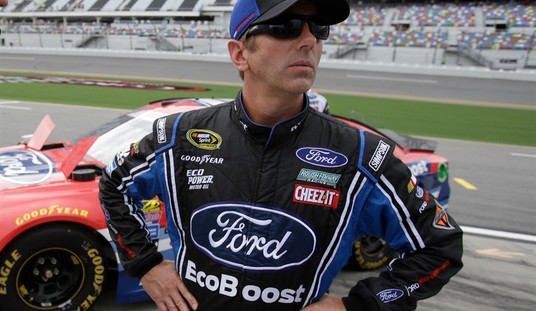Jonathan Last has a review of The Big Picture by Edward Jay Epstein, who argues that because Hollywood and its endless chain of national and international movie releases, along with related soundtrack, DVD releases, TV rights and merchandising deels is so profitable, it doesn’t need to worry about making decent movies:
A survey of the muck soon to be celebrated at the Academy Awards confirms William Goldman’s sad truism: Every Oscar night you look back and realize that last year was the worst year in the history of Hollywood.
It is depressing to watch the quality of American cinema degrade, as if it were some kind of glittery radioactive isotope. But Edward Jay Epstein provides comfort with The Big Picture (Random House, 375 pages, $24.95), offering a compelling backstory to the awfulness we see at the cineplex.The Big Picture is Hollywood’s Moneyball–a groundbreaking work that explains the inner workings of the game. (Movies in this case, not baseball, although each could probably learn from the other.) There is, Epstein argues, a powerful economic reason that movies aren’t very good anymore: They don’t have to be.
* * *
Today the average movie costs $4.2 million to distribute and nearly $35 million just to advertise. (The comparable 1947 figures, adjusted for inflation, were $550,000 and $300,000.) Such peripheral costs, Epstein explains, have grown so large that “even if the studios had somehow managed to obtain all their movies for free, they would still have lost money on their American releases.”
What happened? Hollywood redefined itself too, Epstein argues–as a clearinghouse for intellectual property, not a factory for making movies. This new business is at least as profitable as the old one, but the “product” on offer is different. To explain, follow Epstein’s detailed analysis of the movie Gone in 60 Seconds.
In 2000, Gone, an action-thriller, was released to little acclaim and somewhat disappointing box-office returns. The company that produced it, Touchstone, was (and is) part of the Disney empire. That year, Disney touted the global box-office revenue of Gone as $242 million. Not bad. Even if theaters kept $139.8 million from ticket sales, Disney still took in $102.2 million. Surely there was a profit in there somewhere?
Not necessarily. Consider the expenses. The physical production of the movie was $103.3 million. Prints cost $13 million; insurance, taxes and customs clearance came to almost as much. The studio spent $42 million for advertising in North America and a bit more than half of that for the rest of the globe. On the back end, Disney paid out $12.6 million in residual fees and figured in $17.2 million for overhead and $41.8 million for debt service–for a total negative cost of $265.3 million, more than double the studio’s take of the box-office receipts.
So how did Disney make money? The answer is in the clearinghouse. Disney never expected to profit from the theatrical release of Gone in 60 Seconds, but it did count on harnessing a whole river of money–from the rights to the intellectual property it had created.
By 2002, Buena Vista Home Entertainment International, another division of Disney, had reaped $198 million in sales and rentals from Gone in 60 Seconds videos and DVDs. Only $19 million of that sum was credited to the movie itself, though, thanks to the complicated royalty system that Hollywood employs. This reduced number is an important accounting trick since the movie’s star, Nicholas Cage, was contractually entitled to 10 percent of the video gross.
Indeed, one of the key components of the clearinghouse system–boosting studio revenue enormously–is hiding income from a movie’s (seeming) profit-participants. There is nothing illegal about it, although the effect is a nasty little game of hide and seek. One of the virtues
of The Big Picture is Epstein’s astonishing access to numbers that the movie studios go to great lengths to keep secret, so as not to offend people like Cage.In coming years, Disney can expect a steady, if diminished, stream of income from these Gone home-video sales. But there is more. HBO paid Disney $18.2 million for the rights to air the movie (of which only $2.7 million was exposed to parties entitled to residuals). Once HBO’s deal expired, it migrated onto cable’s TNT network for another payout. Disney will continue to collect money from Gone whenever domestic cable or network television shows it. In a few years, local TV stations will fork over to Disney still more millions when their window finally opens on purchase rights. Still later there will be cash from foreign TV markets. And let’s not forget income from product licensing and soundtrack sales.
The truth is that, even with terrible movies, the studios have to try hard not to make money. In this way, today’s Hollywood is very much like the studio system of old. The two business models are so favorable that the quality of the product is beside the point. The difference, of course, is that the movies from the studio era were often quite good.
As to why that’s typically no longer the case, read last year’s Hollywood Interrupted by Andrew Breitbart and Mark Ebner. Or check out this National Review Online piece by John Podhoretz from September of 2001 (published three days before the world changed), in which he argues that the reason why movies frequently stink is that today’s Hollywood exists in a giant echo chamber, cannibalizing its own old movies for its plots, instead of relying on great stories and their writers, as they did during its Golden Era, or even its own dark renaissance in the 1970s.










Join the conversation as a VIP Member